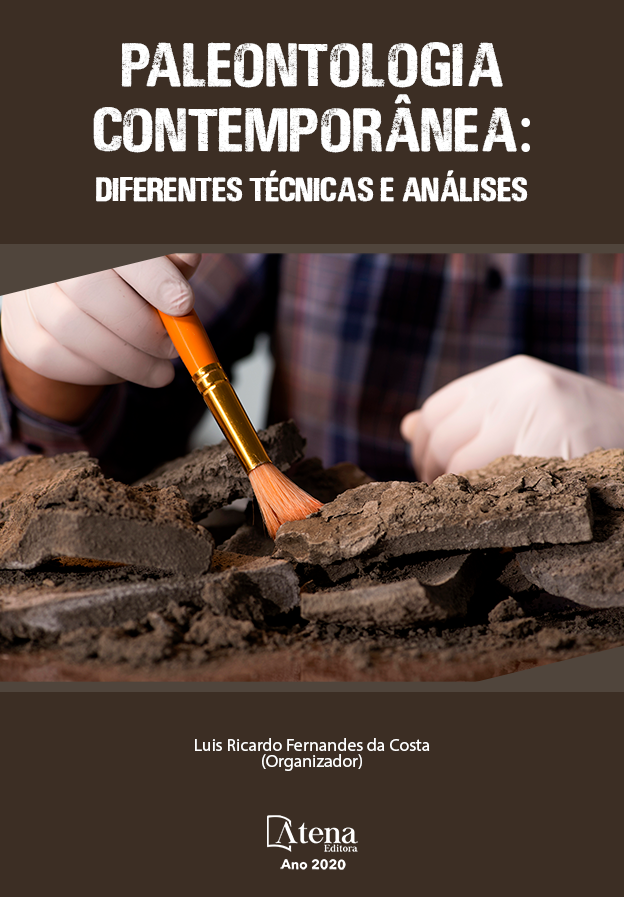
RECONSTITUIÇÃO PALEOBIOGEOCLIMÁTICA DA GRUTA PAU-FERRO, MINAS GERAIS, BRASIL, ATRAVÉS DA ANÁLISE DE FITÓLITOS
Este trabalho visa contribuir para a reconstituição paleoclimática da Serra do Espinhaço Meridional durante o Quaternário, utilizando os fitólitos como proxy principal. Os fitólitos são partículas microscópicas de opala biogênica que se formam por precipitação de sílica amorfa entre e no interior de células de diversas plantas vivas, como resultado da absorção de ácido silícico da solução do solo pelas plantas. Portanto, são de alto potencial de preservação e, por isso, são úteis em reconstituições paleobiogeográficas e paleoclimáticas.. A área de interesse situa-se no entorno da Gruta Pau-Ferro, no município de Monjolos, Minas Gerais, Brasil, onde foram coletadas quatro amostras em um Neossolo Litólico. O estoque de fitólitos seguiu o padrão normal de diminuição de profundidade e se apresentaram bem preservados, com uma média de 79 a 81% de fitólitos classificáveis, com predomínio dos tipos produzidos por Poaceae: bulliform paralelepipedal e cuneiform (indicam estresse hídrico), cross e bilobate (ambientes úmidos) e rondel e trapeziform (regiões temperadas ou tropicais de altitude). O índice de densidade arbórea (D/P) é baixo (entre 0,08 a 0,13), indicando uma vegetação predominantemente aberta, embora atualmente em muitos locais seja encontrada uma mata seca. O índice Bi apresenta valores médios a elevados (65 a 77%), indicando moderado estresse hídrico. O índice Ic possui grandes variações em profundidade, apontando adaptação da formação vegetal a baixas temperaturas. As idades obtidas por 14C-AMS foram entre 440-225 anos cal AP. Os resultados das análises fitolíticas associadas a outros indicadores (análise multiproxy) deste trabalho, agregadas às de vários outros realizados na região, se mostraram úteis para a compreensão de sua geodinâmica e evolução da paisagem durante o Quaternário.
RECONSTITUIÇÃO PALEOBIOGEOCLIMÁTICA DA GRUTA PAU-FERRO, MINAS GERAIS, BRASIL, ATRAVÉS DA ANÁLISE DE FITÓLITOS
-
DOI: 10.22533/at.ed.0092018097
-
Palavras-chave: Fitólitos, Gruta Pau-Ferro, Reconstituição paleobiogeoclimática, Serra do Espinhaço Meridional, Quaternário
-
Keywords: Phytoliths, Pau-Ferro Cave, Paleobiogeoclimatic Reconstruction, Southern Espinhaço Mountain Range, Quaternary
-
Abstract:
This study aims to contribute at the paleoclimatic reconstruction of the Serra do Espinhaço Meridional during the Quaternary, using phytoliths as the main proxy. Phytoliths are microscopic particles of biogenic opal that are formed through precipitation of amorphous silica between and within the cells of several living plants, as a result of the absorption of silicic acid from the soil solution. Therefore, they have a high preservation potential, being useful in paleobiogeographic and paleoclimatic reconstructions. The study area is located around the Pau-Ferro Cave, in the municipality of Monjolos, Minas Gerais, Brazil, where four samples were collected from a Litholic Neossol. The phytolith stock followed the normal pattern of decreasing with depth and the phytoliths were well preserved, with a mean of 79 to 81% of classified phytoliths. There was a predominance of types produced by Poaceae: parallelepipedal and cuneiform bulliform (indicating water stress), cross and bilobate (humid environments), and rondel and trapeziform (temperate or high-altitude tropical regions). The tree density index (D/P) is low (between 0.08 and 0.13), indicating predominantly open vegetation, although dry forest is currently found in many places. The Bi index presents medium to high values (65 to 77%), indicating moderate water stress. The Ic index has great variations in depth, indicating adaptation of plant formation to low temperatures. The ages obtained through 14C-AMS were between 440-225 cal years BP. The results of phytolyth analyses associated with other indicators (multiproxy analysis) of this work, combined with those of several others carried out in the region, proved useful for understanding its geodynamics and landscape evolution during the Quaternary.
-
Número de páginas: 16
- Heloisa Helena Gomes Coe
- Alessandra Mendes Carvalho Vasconcelos
- Evelyn Aparecida Mecenero Sanchez
- Ana Clara Mendes Caixeta
- Karina Ferreira Chueng


